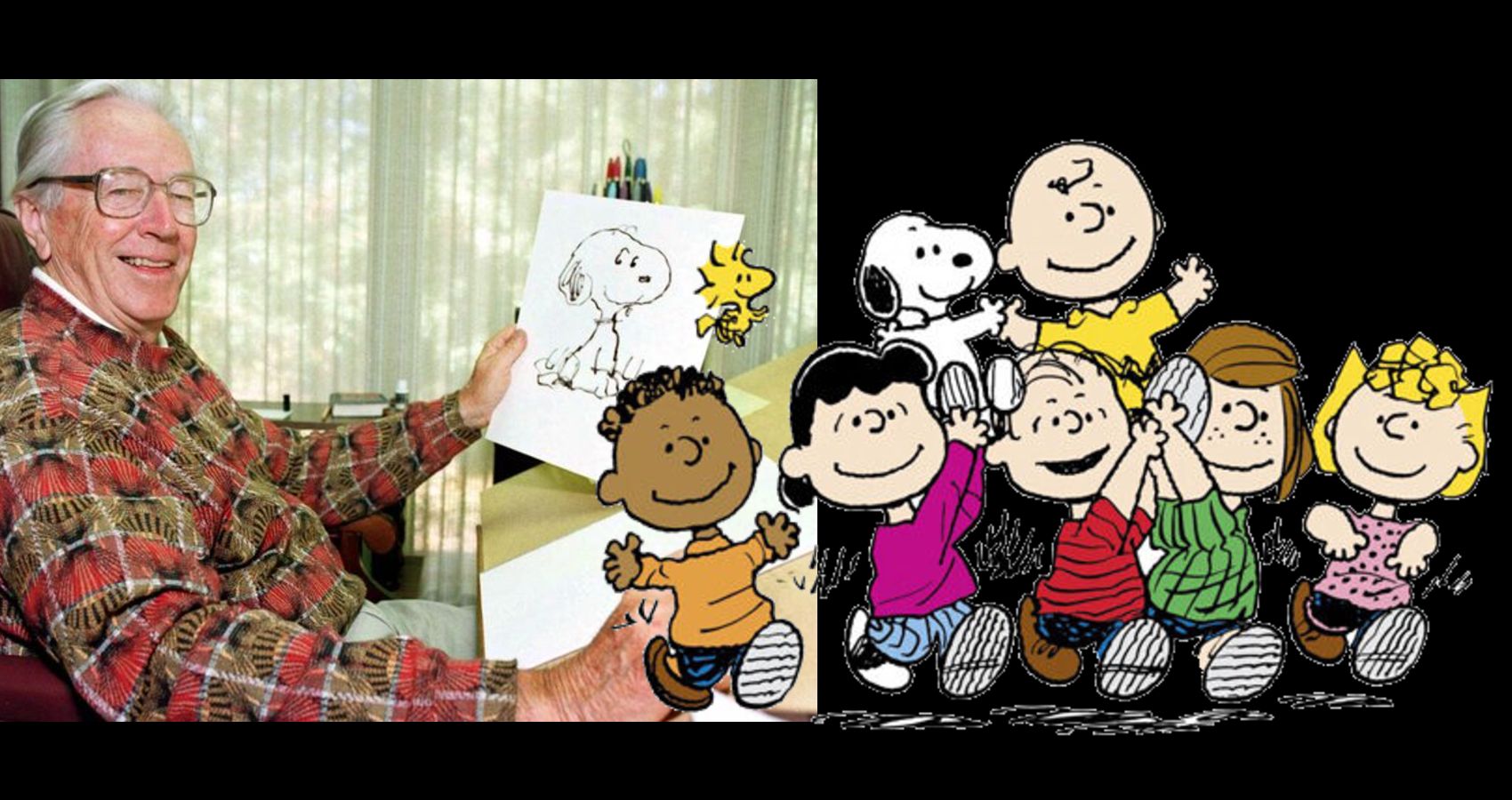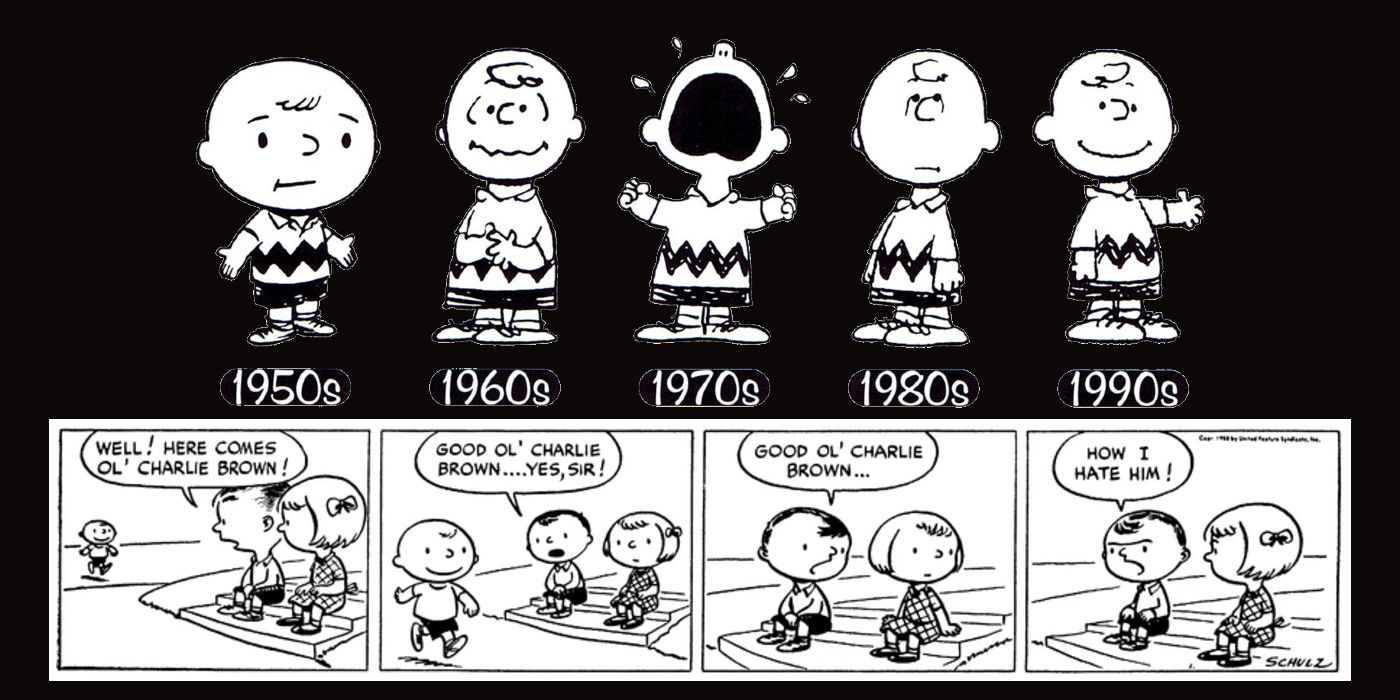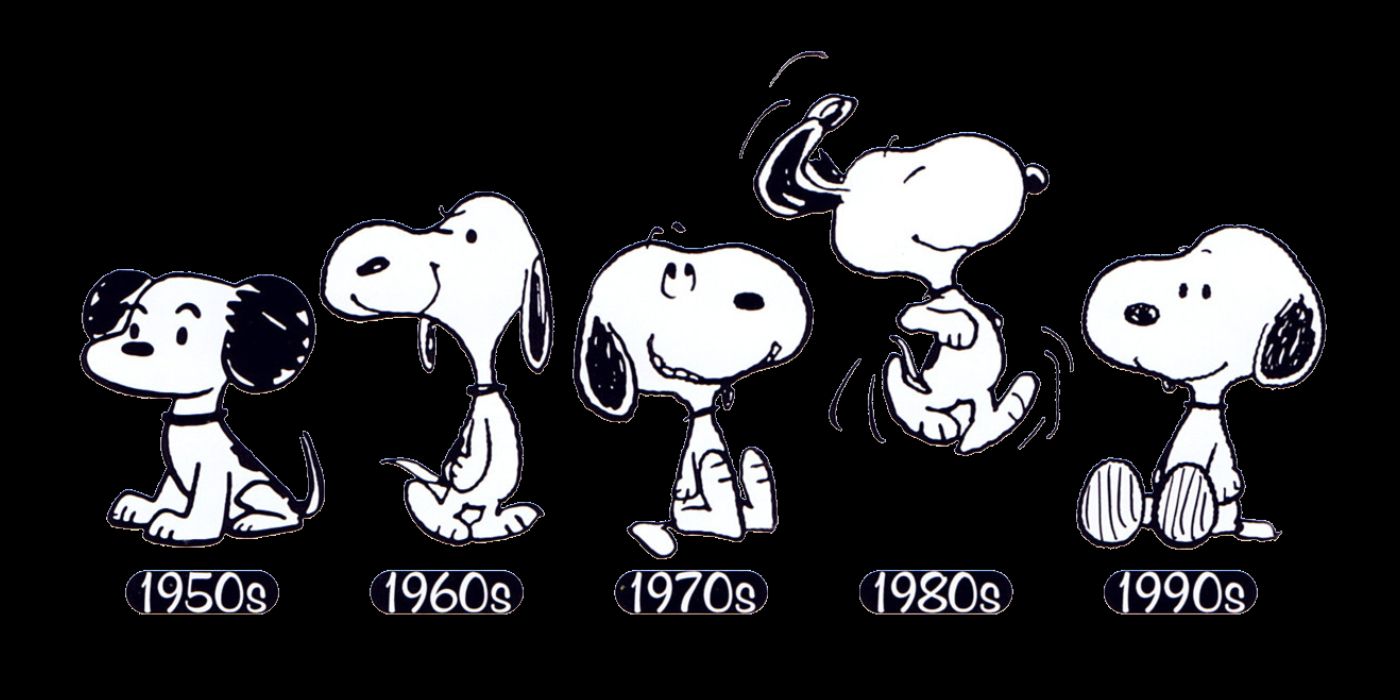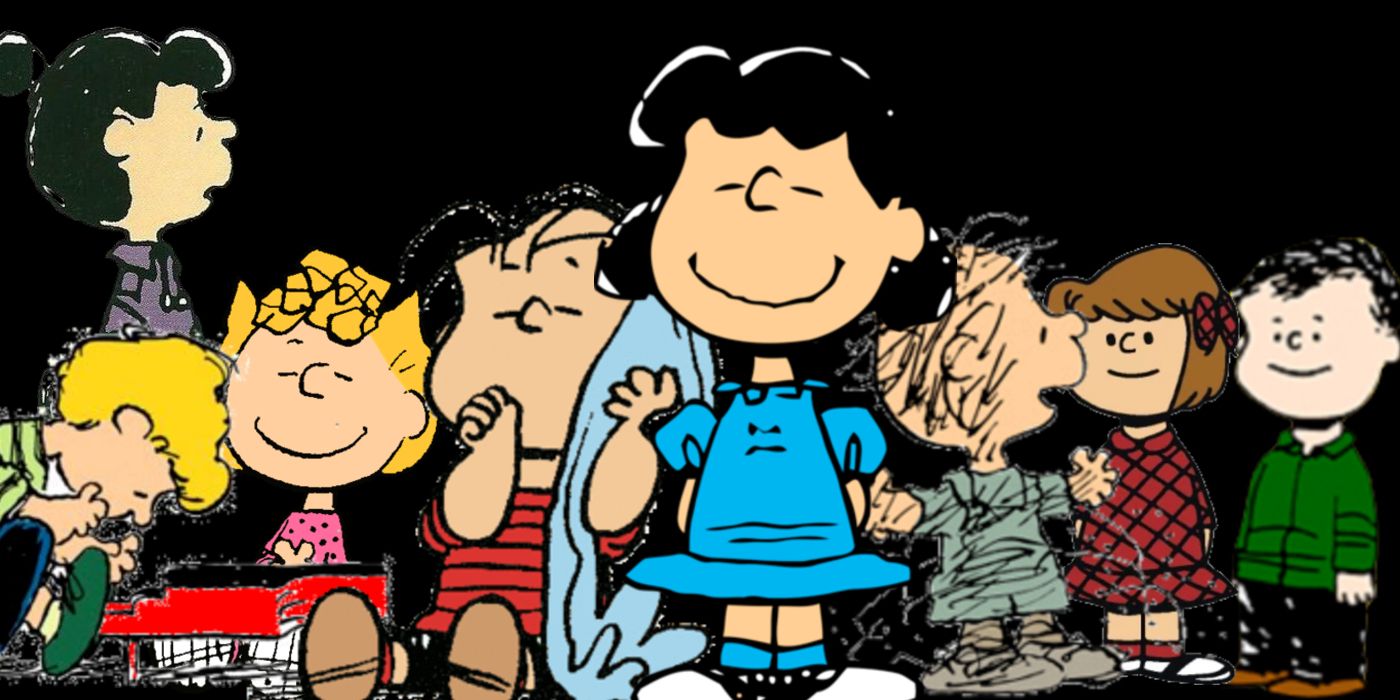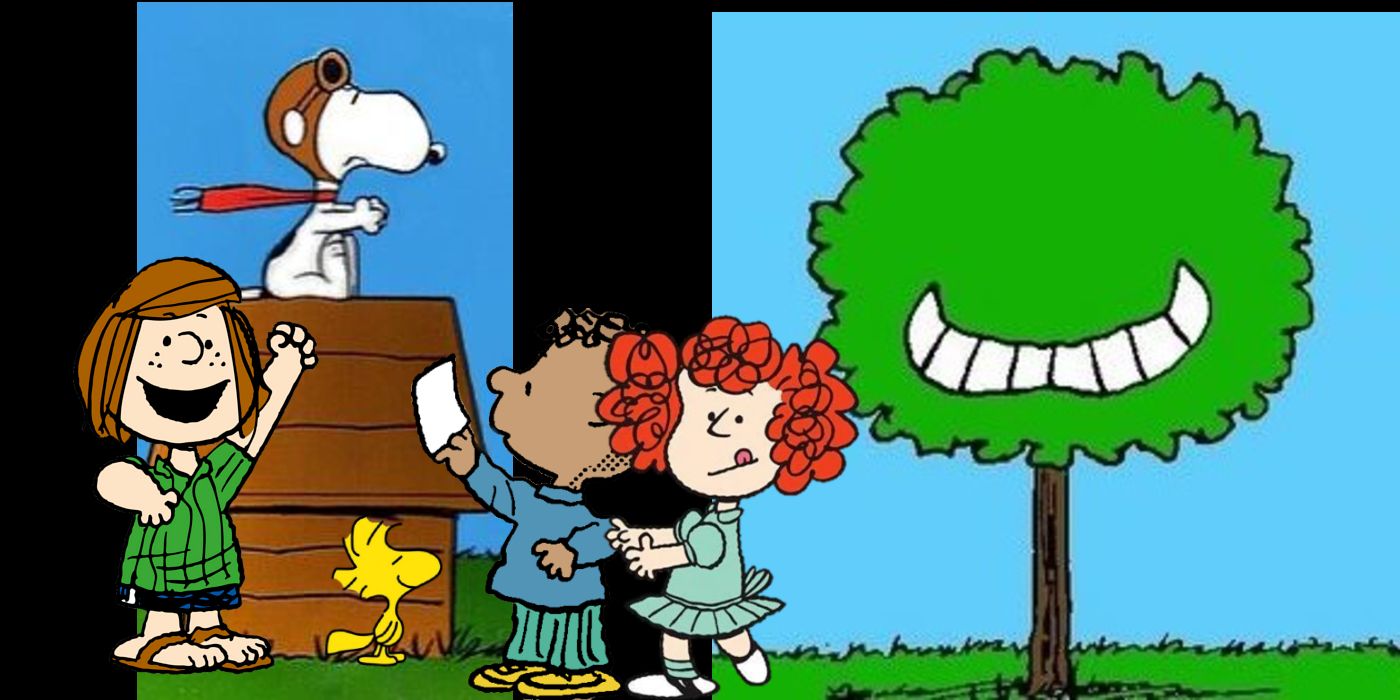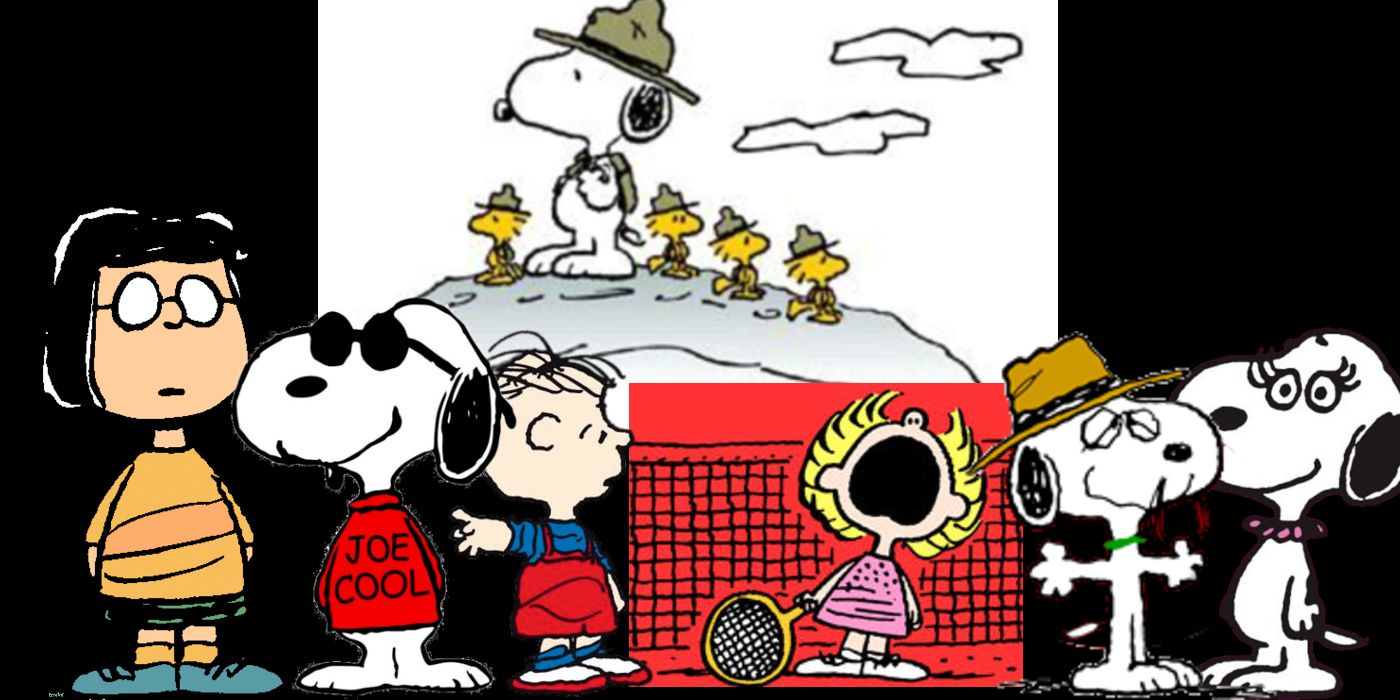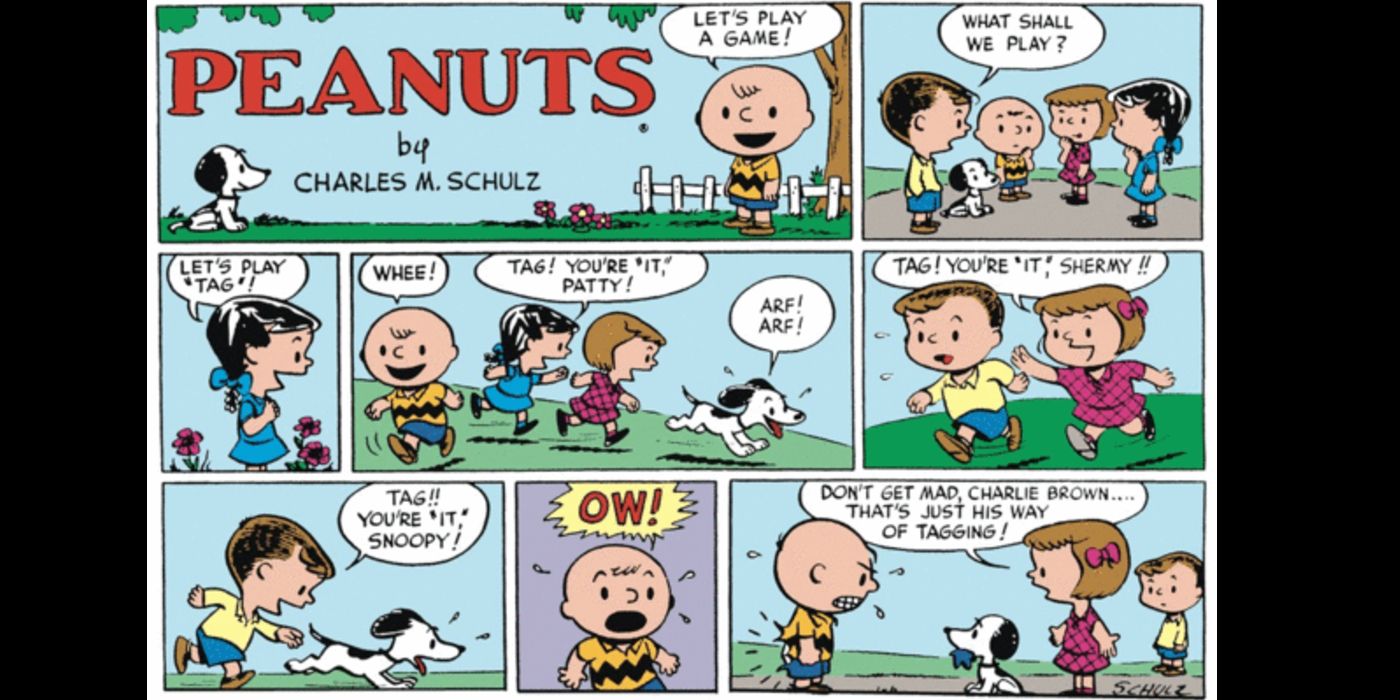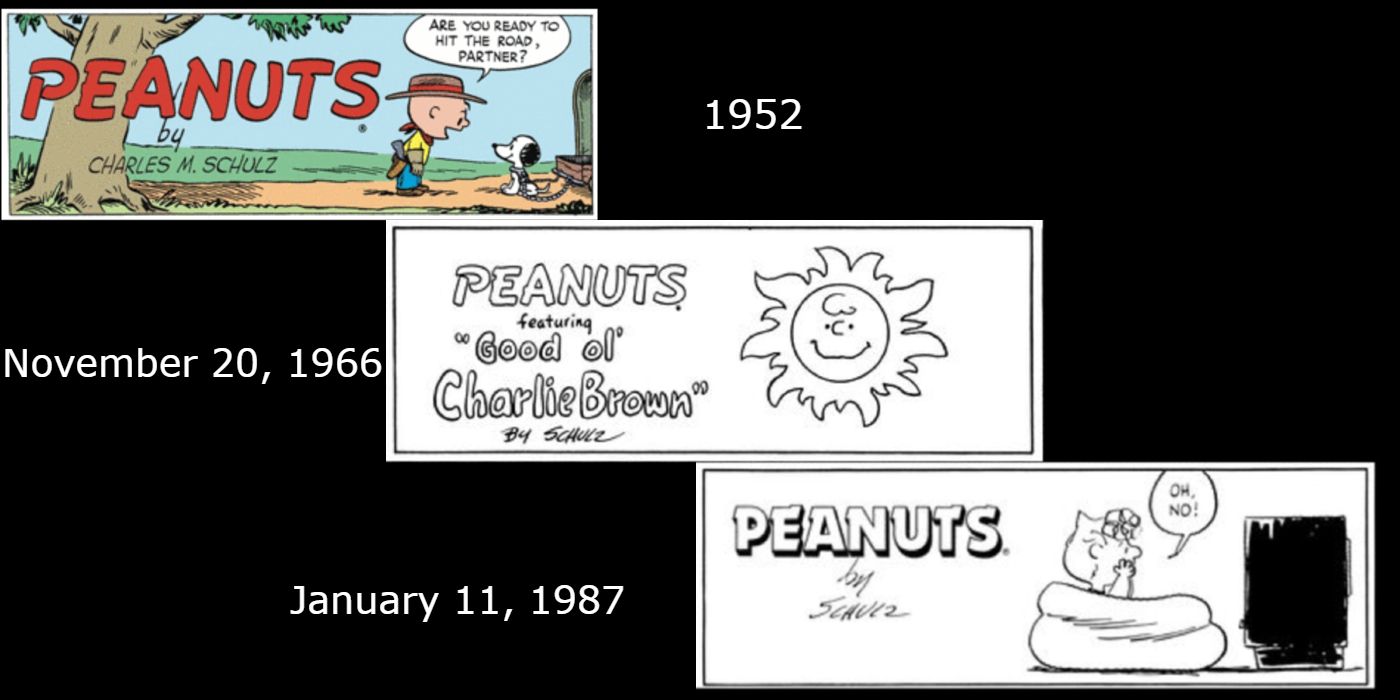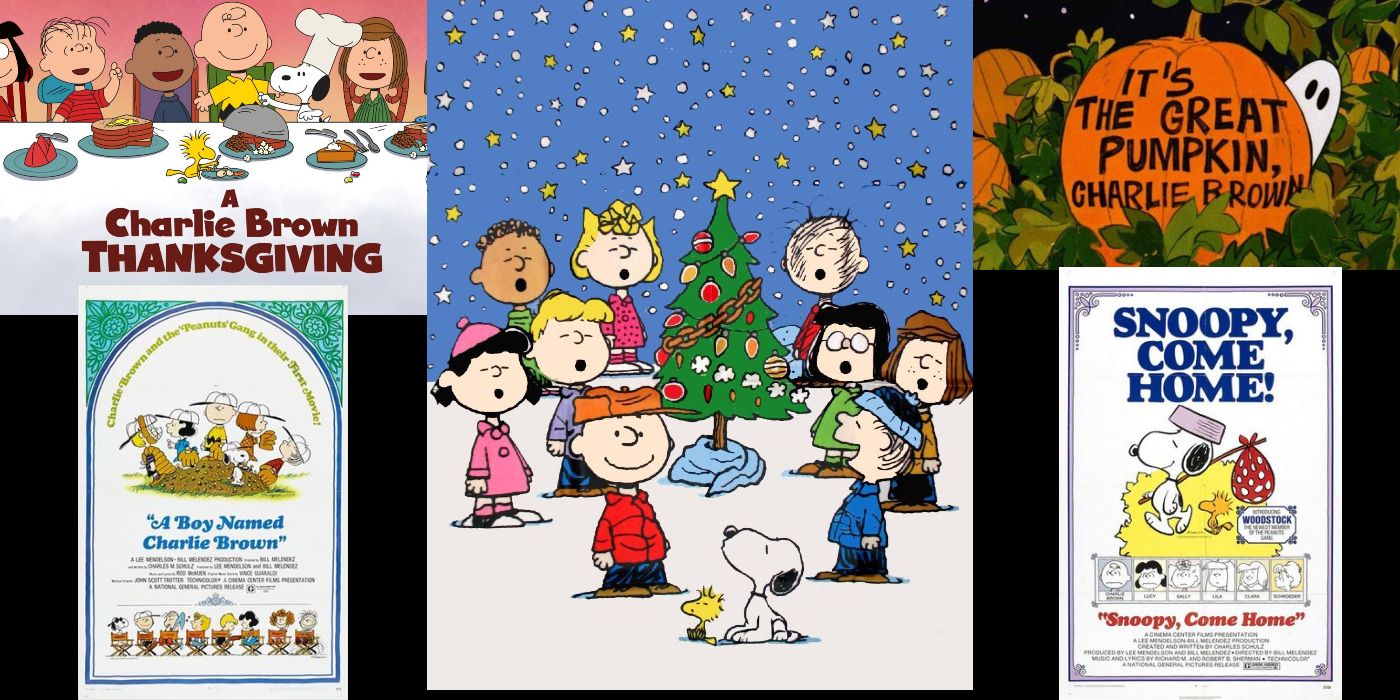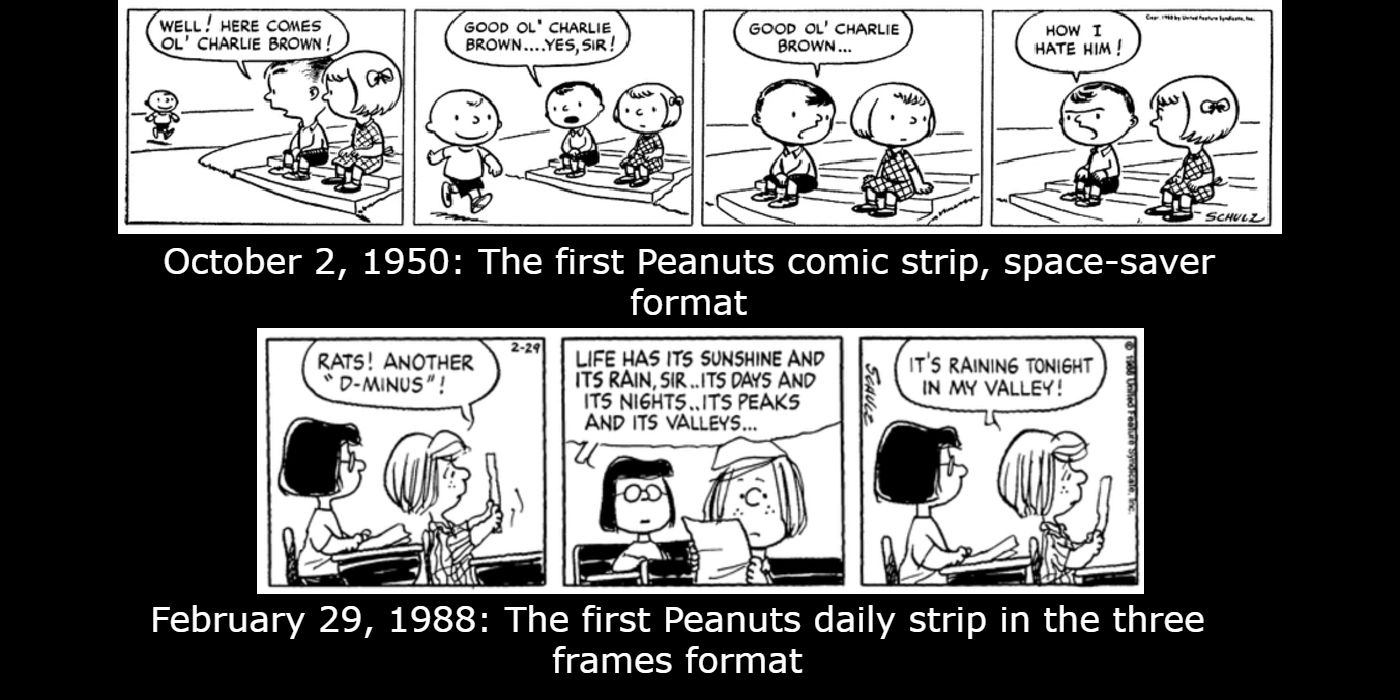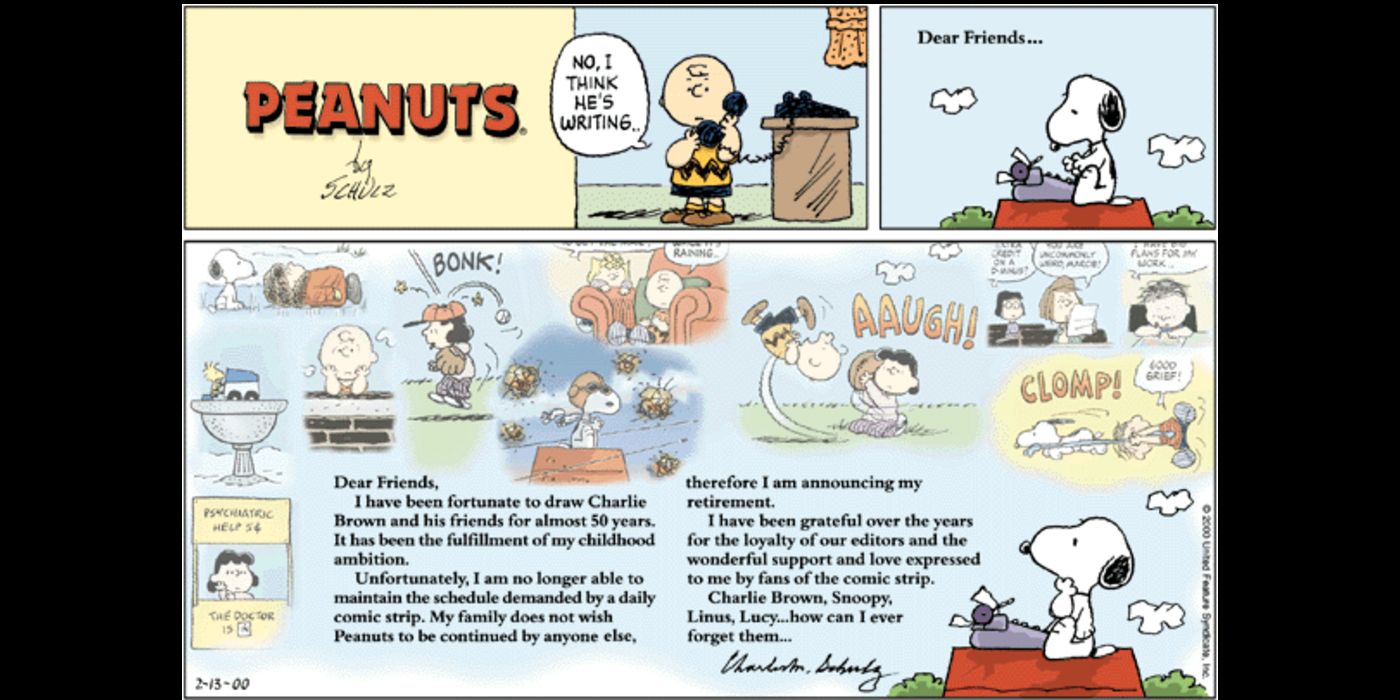Charles Schulz's comic strip PEANUTS is perhaps one of the most prolific cartoon strips of the 20th century. After unsuccessfully launching his first comic strip Li'l Folks, which was dropped after two and a half years, Schulz then approached United Feature Syndicate with some of his best Li'l Folks strips, including his previously created characters of Charlie Brown and a Snoopy-like dog.
What began as a simple cartoon boy, largely based on his own experiences growing up, would, over 50 years, bring some of the most iconic characters to pop culture. Like any property that has been around as long as the Peanuts gang has, there are bound to be many changes to both the characters and their presentation.
10 Good Ol' Charlie Brown
When the strip first debuted on October 2, 1950, the comic strip's star, Charlie Brown, looked different from what readers would come to associate with him. Initially, Charlie was a bald kid with a plain shirt, not the iconic one with the black zig-zag pattern going around the bottom. It would be another two months before the trademark shirt would first appear on December 20, 1950.
Another prominent feature of Charlie Brown that was different in the early strips was his head's shape. Originally Charlie's head was football-shaped compared to the other more round-headed characters. Meanwhile, the other characters generally had bigger mouths and smaller eyes, appearing to look sideways. But this also changed to make everyone look more uniform.
9 A Dog Named Snoopy
Snoopy, Charlie Brown's dog, and best friend, first appeared in the third episode of the strip, on October 4, 1950. When he first appeared, The first time Snoopy was called out by name was in the November 10, 1950 strip. Over the years, Snoopy would evolve into the beagle who could do almost anything from dance on two feet (October 19, 1952), have his thoughts appear in thought balloons (May 27, 1952), and have an affinity for pizza and root beer.
When creating and writing Snoop, Schulz was careful to balance Snoopy's existence between that of a dog in the real world and a fantastical character who could do anything and have multiple personalities.
8 The Extended Cast
As the series continued throughout the 50s, Schulz continued introducing more of Charlie Brown's friends who would become integral parts of the series. Shermy and Patty appeared in the first strip and would remain regulars throughout the series, even though they became more background supporting characters.
The next characters introduced were Violet and Schroeder in 1951, Linus and Lucy in 1952, Pig-Pen in 1954, and Charlie's little sister Sally in 1959. Other first appearances of classic Peanuts moments include the football gag, Lucy begins practicing at her psychiatry booth, and the introduction of well-known phrases such as Charlie as "wishy-washy," "blockhead," and the first utterance of "good grief."
7 The 60s Wave of Characters
The 60s saw the supporting cast expand and diversify, broaching social issues of the day. Franklin, the first black character, was introduced in July of 1968, months after the assassination of Rev. Dr. Martin Luther King, Jr., a controversial move that some thought to be a political statement by Schulz.
Other characters appearing in the 60s included tomboy Peppermint Patty and Snoopy's pal Woodstock in 1966, Charlie Brown's nemesis the Kite-Eating Tree and Snoopy, the World War I Flying Ace in 1965, Frieda and the first mention of the Little Red-Head Girl in 1961 are just a few of the changes to the strip during this time.
6 The Fresh Faces Of The 70s
As the 70s began the 20th year of the strip, Schulz expanded Snoopy's family, introducing his brothers and sisters, who he once knew from his early days at the Daisy Hill Puppy Farm. Spike, his brother who lives in the California desert, first appeared in August of 1975, and his sister Belle in 1976. Peppermint Patty's best friend Marcie first appears in July of 1971 but is not named until later in October.
Lucy and Linus got a new family member with the introduction of Rerun in 1973. Along with his new family, Snoopy grew as a character adopting the alias of Joe Cool for the first time in 1971 and becoming the Beagle Scouts leader in 1974.
5 The First Sunday Strip
One of the hallmarks that The Peanuts will be remembered for is the Sunday strip, which first ran on January 6, 1952. The Sunday strip was different from the weekly strip in a few ways, such as the number of panels, how they were laid out, and that it was in color. The strips that ran during the week were four square panels, whereas the Sunday strip had multiple panels of various shapes, depending on the story.
The first Sunday strip had Charlie Brown playing tag with Shermy, Patty, Violet, and Snoopy. Unlike the weekly strips, which sometimes took a few days to tell a complete story, the Sunday installments were self-contained shorts.
4 The Sunday Strip Banner
The Sunday strip's opening panel contained the banner and a drawing that usually set up the strip. When the Sunday strip began in 1952, the banner was simply "PEANUTS by Charles M. Schulz." At the end of November of 1966, the banner introduced the strip as "PEANUTS featuring 'Good Ol' Charlie Brown' by Schulz" and would remain that way until 1987. In 1987, the banner changed for its final time as 'Good Ol' Charlie Brown' was dropped and was returned to a cleaner version of the original of "PEANUTS by Schulz."
3 Peanuts On The Small And Big Screen
In 1965, Charlie Brown and his friends jumped from the comics page to television with the classic A Charlie Brown Christmas. The following year two more made for tv specials, Your An All-Star, Charlie Brown, and It's The Great Pumpkin, Charlie Brown. As the years went by, other tv specials, some holiday-themed and others not, were released. The Peanuts gang also starred in a few movies such as A Boy Named Charlie Brown and Snoopy, Come Home. In the mid-80s, there was a short-lived television series on CBS.
2 Strip Drops "Space-Saver" Format
For 38 years, the Peanuts strip was written and drawn as a "space-saver strip," which Schulz would later refer to as a sales gimmick used by syndicators who didn't have much confidence in the success of the strip. As a space-saver cartoon, Peanuts consisted of four equally sized and shaped panels, which allowed newspapers to run the strip in one of three different ways: horizontal, vertical, or as a 2x2 block.
On February 29, 1988, Peanuts was first published as a three-panel strip, which would remain the standard length until the strip ended, although Schulz sometimes did a two or one-panel presentation.
1 The Final Strip
The last daily Peanuts strip was released on January 3, 2000, with the Sunday strip running until February 13. As the strip was coming to an end, Schulz's health was also failing due to his battle with colon cancer. Linus' final appearance and the last interaction between Charlie Brown and Peppermint Patty and Marcie occurred in a single-panel snowball fight, published January 1, 2020. Peppermint Patty and Marcie got their final appearance the next day in the Sunday strip.
On February 13, the final Sunday comic strip featuring Charlie Brown and Snoopy's final appearances and a thank you from Schulz appeared for the last time, the day after passed at the age of 77.

